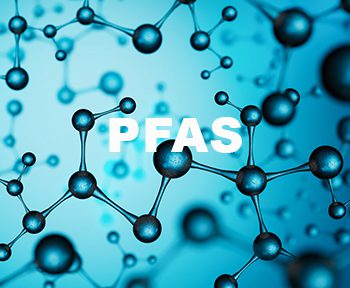Fighting Forever Chemicals: USEPA Proposes the First Enforceable Nationwide Primary Drinking Water Standards for PFAS
March 21, 2023
Environmental Law
Last week, the U.S. Environmental Protection Agency (USEPA) announced a proposed rulemaking that would establish legally enforceable federal primary Maximum Contaminant Levels (“MCLs”) for six per- and polyfluoroalkyl substances (PFAS) in drinking water. In addition to creating enforceable drinking water standards, these MCLs, if adopted, could be used as a benchmark for establishing groundwater remediation goals or be used in other regulatory or litigation contexts. USEPA expects to finalize the rulemaking by the end of this calendar year.
The rulemaking, also referred to as USEPA’s National Primary Drinking Water Regulation (NPDWR), proposes to establish primary MCLs for the following six different PFAS compounds:
- Perfluorooctanoic acid (PFOA)
- Perfluorooctane sulfonic acid (PFOS)
- Perfluorononanoic acid (PFNA)
- Hexafluoropropylene oxide dimer acid (HFPO-DA, commonly known as GenX Chemicals)
- Perfluorohexane sulfonic acid (PFHxS)
- Perfluorobutane sulfonic acid (PFBS).
Under the proposed rule, PFOA and PFOS would be treated as individual contaminants, both with primary MCLs set at 4.0 parts per trillion (ppt or ng/L). For PFHxS, PFNA, PFBS, and HFPO-DA (commonly referred to as GenX Chemicals), USEPA proposes the use of a “Hazard Index” MCL where the maximum limit is based on any mixture containing one or more of the four compounds. Compliance with the Hazard Index MCL is calculated as the sum of the ratios of the measured concentration compared to the allowable concentration. To determine the Hazard Index, water systems will need to monitor and compare the amount of each PFAS compound in drinking water to its associated Health-Based Water Concentration (HBWC), which is the level at which no health effects are expected for that compound. Water systems will need to then add the comparison values for each compound contained within the mixture. A value greater than 1.0 (the index is unit less) would be considered an exceedance of the proposed Hazard Index MCL. USEPA intends to provide water systems with a web-based form that will automatically calculate the Hazard Index to assist with determining compliance.
USEPA’s proposed rule will require public water systems to monitor for the six PFAS compounds, notify the public of the concentrations detected, and reduce concentrations in drinking water if they exceed the proposed primary MCLs. While there are existing methods available to monitor for the constituents (e.g., method 1633 for PFOA and PFOS), treatment technologies to remove the constituents (e.g., granular activated carbon (GAC), anion exchange resins (AIX), reverse osmosis (RO), and nanofiltration) remain expensive, a significant concern to regulated entities.
Importantly, if a state does not have PFAS-related drinking water standards in-line with USEPA’s final rule, the state will, at a minimum, be required to establish new regulations to conform to USEPA’s standards. As we previously reported, California’s Office of Environmental Health Hazard Assessment (OEHHA) is currently working on public health goals (PHGs) for PFAS chemicals in drinking water. The State Water Resources Control Board plans to utilize the PHGs in the process of establishing MCLs, which now must consider the federal baseline, if established.
Finally, USEPA also proposed health-based, non-enforceable MCL Goals (MCLGs) for each of the six PFAS compounds. An MCLG is the maximum level of a contaminant in drinking water where there is no known or anticipated negative effects in an individual’s health. The proposed MCLG for PFOA and PFOS is 0.0 ppt, whereas the proposed MCLG for PFNA, PFHxS, PFBS, and/or GenX Chemicals is a Hazard Index equal to or less than 1.0. Markedly, these levels are even more stringent than the lifetime health advisory levels issued by USEPA in June of last year, which were concerning to both the public and the regulated community (previously reported about here).
A 60-day public comment period will open following publication of USEPA’s proposed rule in the Federal Register. Public comments can be provided at that time at www.regulations.gov under Docket ID: EPA-HQ-OW-2022-0114. USEPA will also be holding a public hearing on May 4, 2023, where members of the public can register to attend and provide verbal comments on the rule proposal. For additional information, please click here.
Downey Brand is closely monitoring the status of this proposed rule through its finalization later this year. For any questions about USEPA or California’s efforts to regulate PFAS, please contact us.

